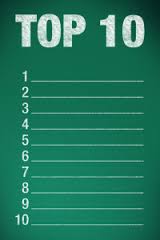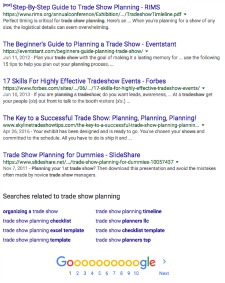 If you spend any time researching the planning and execution of a successful trade show program, you’ll discover no shortage of material on the subject. Publications like Exhibitor Magazine, Exhibit City News and Trade Show Executive are great sources, along with the EDPA. There are countless social media pages and blogs devoted to industry best practices.
If you spend any time researching the planning and execution of a successful trade show program, you’ll discover no shortage of material on the subject. Publications like Exhibitor Magazine, Exhibit City News and Trade Show Executive are great sources, along with the EDPA. There are countless social media pages and blogs devoted to industry best practices.
Much of what I find seems to be information that’s recycled and republished. Even so, most is good, sound advice based on statistical evidence and experience. Many of these sources have been useful in putting together some of my writing.
What is interesting though, even with all this available information, supported by statistics or industry veterans on both sides of the trade show fence, every day you still see behavior contrary to accepted advice.
Recently I had a phone call with two other industry veterans - a supplier partner and a trade show planning professional. We came up with 10 basic pieces of advice based on years of experience, including mistakes, incorrect assumptions and yes, even some successes.
We agreed those new to the industry or unfamiliar with all the moving parts, believe they can “beat the system”, or “have figured out a better way”. Usually it’s under the guise of cutting costs associated with their program. Our consensus was those efforts usually are penny-wise and pound-foolish, or yield such small returns they’re not worth the effort.
Here are what we called the “Basic 10”:
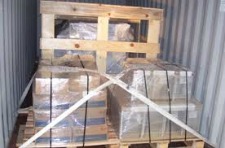 1. If you’re shipping anything that fits in a crate or can be wrapped on a skid, use a dedicated trade show logistics/shipping provider. Experience is key here.
1. If you’re shipping anything that fits in a crate or can be wrapped on a skid, use a dedicated trade show logistics/shipping provider. Experience is key here.
2. For 10’ x 20’ or larger display properties that require tools or are more complex to set up than a pop-up display, partner with an EAC to supervise, install and dismantle your display. They will be your advocate on the show floor.
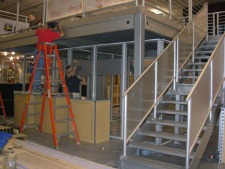 3. Have pre-show and post-show plans for gathering and following up leads. Fail to plan is a plan to fail.
3. Have pre-show and post-show plans for gathering and following up leads. Fail to plan is a plan to fail.
4. The more you know about material handling and the associated costs, the more you have an opportunity to reduce those costs. What properties and materials do you need? What don’t you need? When is the best time for your materials to arrive?
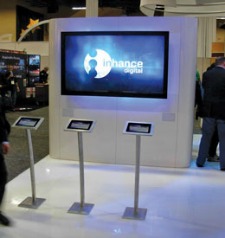 5. Does your monitor have a special function that’s required for your audio-visual presentation? If not, renting from the show AV provider really does make sense in the long run. It seems expensive initially, but so is taking an Uber to the local Best Buy or Walmart to replace the shipped monitor that arrived broken.
5. Does your monitor have a special function that’s required for your audio-visual presentation? If not, renting from the show AV provider really does make sense in the long run. It seems expensive initially, but so is taking an Uber to the local Best Buy or Walmart to replace the shipped monitor that arrived broken.
6. The same is true with carpet. If you’re using carpet for your flooring and it’s not dyed your Pantone color, doesn’t have your logo embedded in it or extends the message from your backwall, just rent from the general contractor. See #4 about material handling. And yes, get the thicker padding.
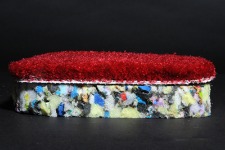 7. Make sure you or someone else has inspected the display properties before the show/event, to ensure all is ready to go and in good working order. Carpet tape and paper clips might be a solution, but neither are pretty.
7. Make sure you or someone else has inspected the display properties before the show/event, to ensure all is ready to go and in good working order. Carpet tape and paper clips might be a solution, but neither are pretty.
8. Your backwall and graphics are meant to get attention, get people to pause and stop at your booth. It is the booth staff’s responsibility to qualify, present and sell your product or service. A lot of text in your graphic and clutter in the booth space is more likely to confuse than engage the attendee.
 9. If you have clear, long-term marketing goals, purchase properties that meet specific needs, but are also adaptable. Find a trade show supplier/partner who understands this.
9. If you have clear, long-term marketing goals, purchase properties that meet specific needs, but are also adaptable. Find a trade show supplier/partner who understands this.
10. Renting makes sense for short-term goals, niche events or limited use. Rentals are great, but they have a specific use.
There you have it. The “Basic 10”. Volumes have been written about each point, and there are many more you could add to the list. My colleagues and I felt these were a good start, based on hard facts, the simple realities of the trade show world and years of experience doing the same thing over and over again.
You can agree or disagree with any of the “Basic 10”, but if you’ve “found a better way”, please share. The trade show world is waiting.
Steve Moskal
